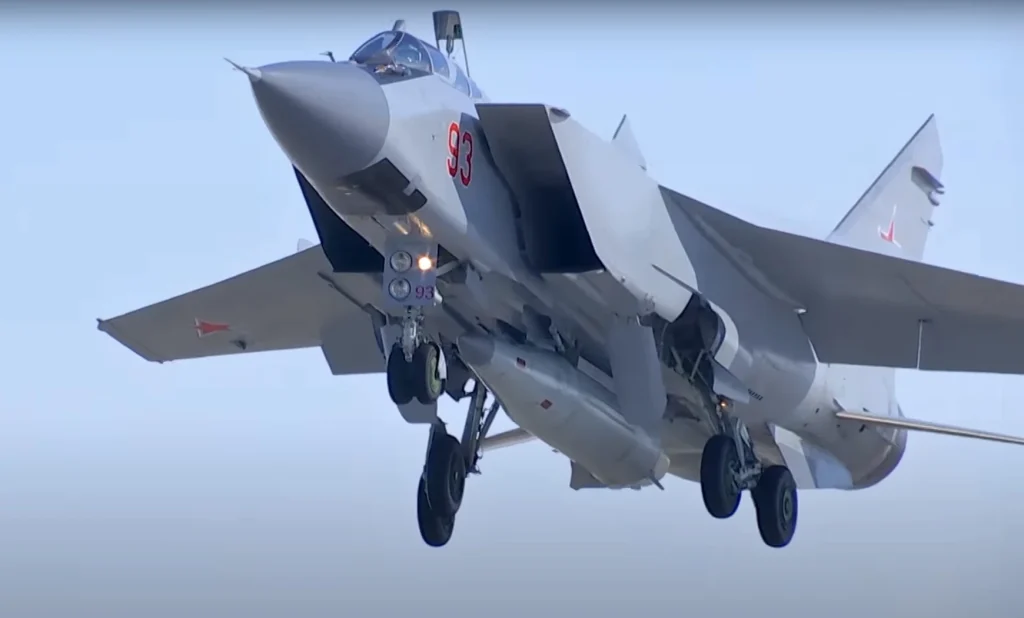Throughout history, there has been a significant focus on missiles capable of carrying weapons of mass destruction (WMD). New missile patterns are, however, emerging. While missile technology is approximately 80 years old, current missiles have made enormous strides in speed, range, navigation, and the utilisation of sophisticated materials. Previously, when achieving precision was difficult, it was believed that missiles could only have a strategic impact when armed with a nuclear payload. Not any longer. As internal and satellite-guided missile guidance systems have become more accurate, even conventional missiles are now capable of strategic precision targeting.
In the ongoing Russia-Ukraine conflict, both sides use conventional missiles for strategic advantage. In the sinking of the Moskva, the Ukrainian anti-ship cruise missile is rumoured to have had a crucial impact. Like the United States, Russia has employed many short-range missiles, notably its hypersonic Kinzhal, to attack strategic targets such as munitions storage facilities and bridges.
With repeated large-scale employment of missiles in various conflicts, increased missile proliferation and unrestricted use of missiles in future conflicts are foreseeable. Future trends in the development and usage of missiles anticipated to become prominent are worth examining.
Dual-Capable Missiles
Dual-capable missiles are capable of transporting both conventional and nuclear payloads. During the Cold War, the superpowers distinguished between missiles that delivered nuclear vs non-nuclear munitions. This trend was reversed when the United States adopted the notion of Conventional Global Prompt Strike in the early 2000s. After 9/11, the United States viewed the likelihood of a terrorist attack as the greatest threat; hence it felt the need for a capability that could strike time-sensitive targets sheltering in reinforced bunkers or caverns. To strike them fast, the United States determined that it must employ existing intercontinental ballistic missiles (ICBMs) equipped with conventional warheads.
However, this alternative aroused alarm in Russia and China. Both countries had the notion that conventionally-armed, highly-accurate intercontinental ballistic missiles (ICBMs) could be used to launch an attack on their nuclear forces, which would have a detrimental effect on their respective deterrents. Since then, they have made numerous steps to restore deterrence, including developing and deploying missiles with dual-use capabilities. The purpose of dual-use capability is to indicate ambiguity and dissuade the United States from attacking its nuclear assets.
China has not only claimed that some of its missiles have dual capabilities but has also combined them. Thus, nuclear and conventional versions of China’s DF-26 missiles are accessible within the same brigade. They are also under the command and control of the People’s Liberation Army Rocket Force (PLARF). China views this tactic of combining conventional and nuclear forces as an effective deterrent against the danger of long-range precision-strike missiles from the United States. The United States fears nuclear entanglement. However, Beijing believes that the United States can be better dissuaded if it is forced to think twice before launching its missiles. This is because it may result in the United States targeting places where nuclear and conventional assets are co-located or in the United States targeting missiles with dual capabilities. Therefore, while the United States may have intended to target conventional Chinese missiles, China may view this as an attack on its nuclear missiles and decide to escalate. Pakistan employs the same reasoning to prevent a conventional war with India.
India has maintained a difference between its conventional and nuclear missiles and their command and control systems in recognition of this danger. This greatly minimises the risk of misunderstanding, especially when the fog of war surrounds a crisis.
New Age of Hypersonic Weapons
Second is developing and deploying hypersonic missiles, such as hypersonic boost-glide vehicles (HGV) and hypersonic cruise missiles (HCMs). Both aircraft go through the upper atmosphere at speeds above Mach 5. Existing intercontinental ballistic missiles also attain hypersonic speeds only during their boost and terminal phases. Most of a hypersonic delivery system’s flight is conducted at high speeds and great levels of manoeuvrability. This makes their interception by missile defence systems difficult. When equipped with appropriate guidance systems, they can be employed for precise strikes on permanent, high-value targets, such as command and control installations or fortified bunkers, and potentially time-sensitive mobility targets, such as naval boats. China has a well-funded and advanced hypersonic missile research programme. Its DF-17 heavy-duty vehicle was unveiled in October 2019 and is reported to be capable of dual missions. The United States has designated a conventional function for its hypersonic systems.

Russia has employed the Kinzhal, a hypersonic missile with dual capabilities, in conventional mode against Ukraine. Because it was utilised in a confrontation between a nuclear and non-nuclear state, the nature of the missile created less alarm. Nonetheless, what influence would the use of such missiles between two nuclear-armed governments have? If a country’s early warning system detects an incoming HGV or HCM but is uncertain about its payload and unable to establish its exact target due to its manoeuvrability, would military strategists favour more reactive postures, such as launch-on-warning or launch-under-attack? This could increase deterrence but also increase the chance of accidental escalation and miscalculation.
The two missiles, as mentioned earlier tendencies are merely the tip of the iceberg. An offence-defence spiral is inevitable as states defend themselves and technologies accelerate. The Missile Technology Control Regime (MTCR) and the Hague Code of Conduct are two examples of existing regimes that are catastrophically insufficient in their claimed purpose of preventing the proliferation of missile technologies. In addition to needing more means of ensuring compliance, their membership needs to be equipped to deal with emerging technological realities. Similarly, any hope of reforming them could be improved. None of the major powers is eager to assume responsibility for the task. Due to rising interstate tensions and a lack of trust, states focus on increasing missile capabilities rather than halting their growth. If interstate relations do not improve via conversation, missiles and their potential uses will continue to increase.
